 Technology peripherals
Technology peripherals AI
AI Anything in Any Scene: Realistic object insertion (to assist in the synthesis of various driving data)
Anything in Any Scene: Realistic object insertion (to assist in the synthesis of various driving data)Original title: Anything in Any Scene: Photorealistic Video Object Insertion
Paper link: https://arxiv.org/pdf/2401.17509.pdf
Code link: https ://github.com/AnythingInAnyScene/anything_in_anyscene
Author affiliation: Xpeng Motors

##Thesis idea
Realistic video simulation shows huge potential in applications ranging from virtual reality to film production. Especially when capturing video in the real world is impractical or expensive. Existing methods in video simulation often fail to accurately model lighting environments, represent object geometry, or achieve high levels of photorealism. This paper proposesAnything in Any Scene, a novel and versatile real video simulation framework that can seamlessly insert any object into existing dynamic videos and emphasize physical realism. The overall framework proposed in this paper contains three key processes: 1) integrating real objects into a given scene video and placing them in appropriate locations to ensure geometric realism; 2) estimating sky and ambient illumination distribution and Simulate real shadows and enhance light realism; 3) Use a style transfer network to refine the final video output to maximize photo realism. This article experimentally proves that the Anything in Any Scene framework can generate simulation videos with excellent geometric realism, lighting realism, and photo realism. By significantly mitigating the challenges associated with video data generation, our framework provides an efficient and cost-effective solution for obtaining high-quality videos. Furthermore, its applications extend far beyond video data enhancement, showing promising potential in virtual reality, video editing, and various other video-centric applications.
Main Contribution
This paper introduces a novel and extensible Anything in Any Scene video simulation framework, capable of integrating any object into any dynamic scene video. This article is uniquely structured and focuses on maintaining geometry, lighting, and photorealism in video simulations to ensure high quality and authenticity of the output results. After extensive verification, the results show that the framework has the ability to produce highly realistic video simulations, thus significantly expanding the application scope and development potential of this field.Thesis Design
Image and video simulation have found success in a variety of applications, from virtual reality to film production. The ability to generate diverse and high-quality visual content through photorealistic image and video simulation has the potential to advance these fields, introducing new possibilities and applications. While the authenticity of images and videos captured in the real world is invaluable, they are often limited by long-tail distributions. This leads to over-representation of common scenarios and under-representation of rare but critical situations, presenting a challenge known as the out-of-distribution problem. Traditional methods of addressing these limitations through video capture and editing proved impractical or cost-prohibitive because it was difficult to cover all possible scenarios. The importance of video simulation, especially by integrating existing videos with newly inserted objects, becomes crucial to overcome these challenges. By generating large-scale, diverse, and realistic visual content, video simulation helps augment applications in virtual reality, video editing, and video data augmentation. However, generating realistic simulation videos considering physical realism is still a challenging open problem. Existing methods often exhibit limitations by focusing on specific settings, especially indoor environments [9, 26, 45, 46, 57]. These methods may not adequately address the complexity of outdoor scenes, including varying lighting conditions and fast-moving objects. Methods relying on 3D model registration are limited to integrating limited classes of objects [12, 32, 40, 42]. Many methods ignore important factors such as lighting environment modeling, correct object placement, and achieving realism [12, 36]. The failed case is shown in Figure 1. Therefore, these limitations greatly limit their application in areas that require highly scalable, geometrically consistent, and realistic scene video simulations, such as autonomous driving and robotics. This paper proposes a comprehensive framework for photorealistic video object insertion in Anything in Any Scene that addresses these challenges. The framework is designed to be versatile and suitable for indoor and outdoor scenes, ensuring physical accuracy in terms of geometric realism, lighting realism, and photorealism. The goal of this paper is to create video simulations that are not only useful for visual data augmentation in machine learning, but also suitable for various video applications such as virtual reality and video editing.The overview of the Anything in Any Scene framework of this article is shown in Figure 2. This paper details our novel and scalable pipeline for building a diverse asset library of scene videos and object meshes in Section 3. This paper introduces a visual data query engine designed to efficiently retrieve relevant video clips from visual queries using descriptive keywords. Next, this paper proposes two methods for generating 3D meshes, leveraging existing 3D assets as well as multi-view image reconstruction. This allows unrestricted insertion of any desired object, even if it is highly irregular or semantically weak. In Section 4, the paper details methods for integrating objects into dynamic scene videos, focusing on maintaining physical realism. This paper designs the object placement and stabilization method described in Section 4.1 to ensure that the inserted object is stably anchored on consecutive video frames. To address the challenge of creating realistic lighting and shadow effects, this paper estimates sky and environment lighting and generates realistic shadows during rendering, as described in Section 4.2. The generated simulated video frames inevitably contain unrealistic artifacts that differ from real-world captured video, such as imaging quality differences in noise levels, color fidelity, and sharpness. This paper uses a style transfer network to enhance photo realism in Section 4.3.
The simulation videos generated from the framework proposed in this paper achieve a high degree of lighting realism, geometric realism, and photo realism, outperforming other videos in both quality and quantity, as shown in Section 5.3. This article further demonstrates the application of this article's simulation video in training perception algorithms in Section 5.4 to verify its practical value. The Anything in Any Scene framework enables the creation of large-scale, low-cost video datasets for data augmentation with time-efficiency and realistic visual quality, thereby easing the burden of video data generation and potentially improving long-tail and out-of-distribution challenges . With its general framework design, the Anything in Any Scene framework can easily integrate improved models and new modules, such as improved 3D mesh reconstruction methods, to further enhance video simulation performance.
 Figure 1. Examples of simulated video frames with incorrect lighting environment estimation, incorrect object placement, and unrealistic texture styles. These problems make the image lack physical realism.
Figure 1. Examples of simulated video frames with incorrect lighting environment estimation, incorrect object placement, and unrealistic texture styles. These problems make the image lack physical realism.  Figure 2. Overview of the Anything in Any Scene framework for photorealistic video object insertion
Figure 2. Overview of the Anything in Any Scene framework for photorealistic video object insertion Figure 3. Example of a driving scene video for object placement. The red dots in each image are where the objects were inserted.
Figure 3. Example of a driving scene video for object placement. The red dots in each image are where the objects were inserted.
Experimental results

Figure 4. Examples of original sky images, reconstructed HDR images, and their associated solar illumination distribution maps

Figure 5. Examples of original and reconstructed HDR environment panoramic images

Figure 6. For inserted objects Example of shadow generation

# Figure 7. Qualitative comparison of simulated video frames from the PandaSet dataset using different style transfer networks.

Figure 8. Qualitative comparison of simulated video frames from the PandaSet dataset under various rendering conditions.



Summary:
This paper proposes an innovative and extensible framework, "Anything in Any Scene", designed for realistic video simulation And design. The framework proposed in this paper seamlessly integrates various objects into different dynamic videos, ensuring that geometric realism, lighting realism, and photo realism are preserved. Through extensive demonstrations, this paper demonstrates its efficacy in mitigating challenges associated with video data collection and generation, providing a cost-effective and time-saving solution for a variety of scenarios. The application of our framework shows significant improvements in downstream perception tasks, especially in solving the long-tail distribution problem in object detection. The flexibility of our framework allows direct integration of improved models for each module, and our framework lays a solid foundation for future exploration and innovation in the field of realistic video simulation.
Citation:
Bai C, Shao Z, Zhang G, et al. Anything in Any Scene: Photorealistic Video Object Insertion[J]. arXiv preprint arXiv:2401.17509 , 2024.
The above is the detailed content of Anything in Any Scene: Realistic object insertion (to assist in the synthesis of various driving data). For more information, please follow other related articles on the PHP Chinese website!
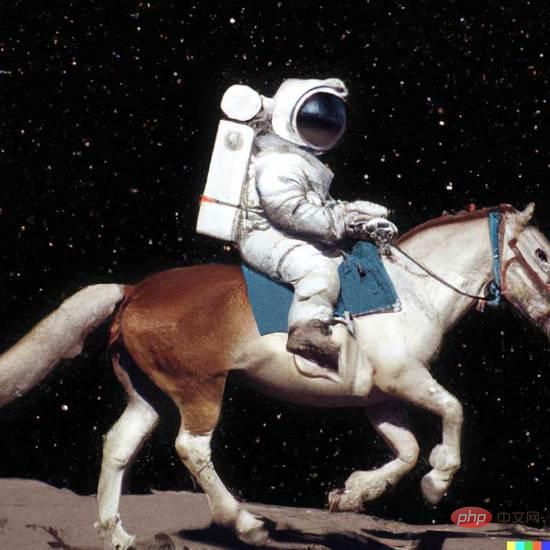 从VAE到扩散模型:一文解读以文生图新范式Apr 08, 2023 pm 08:41 PM
从VAE到扩散模型:一文解读以文生图新范式Apr 08, 2023 pm 08:41 PM1 前言在发布DALL·E的15个月后,OpenAI在今年春天带了续作DALL·E 2,以其更加惊艳的效果和丰富的可玩性迅速占领了各大AI社区的头条。近年来,随着生成对抗网络(GAN)、变分自编码器(VAE)、扩散模型(Diffusion models)的出现,深度学习已向世人展现其强大的图像生成能力;加上GPT-3、BERT等NLP模型的成功,人类正逐步打破文本和图像的信息界限。在DALL·E 2中,只需输入简单的文本(prompt),它就可以生成多张1024*1024的高清图像。这些图像甚至
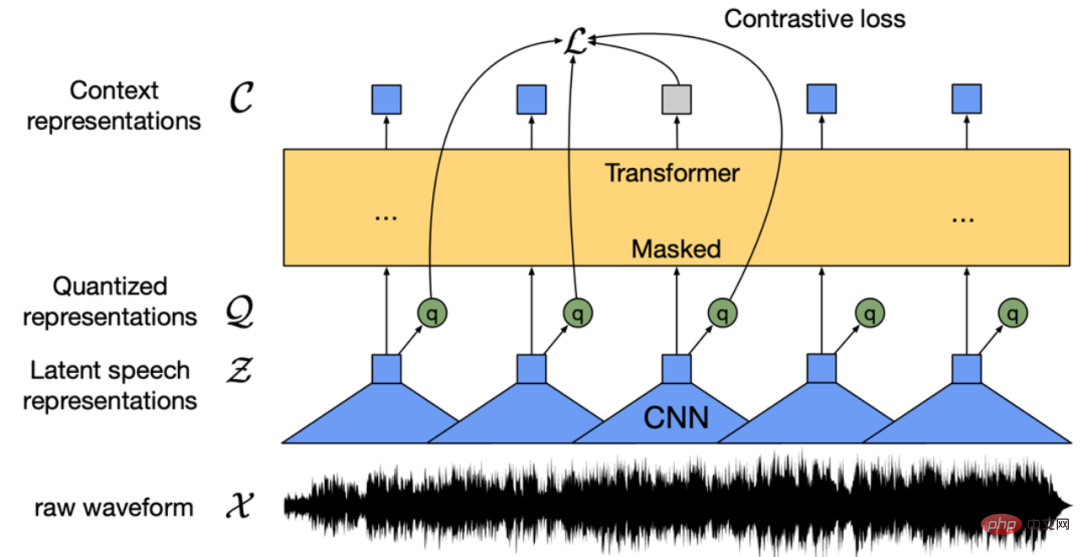 找不到中文语音预训练模型?中文版 Wav2vec 2.0和HuBERT来了Apr 08, 2023 pm 06:21 PM
找不到中文语音预训练模型?中文版 Wav2vec 2.0和HuBERT来了Apr 08, 2023 pm 06:21 PMWav2vec 2.0 [1],HuBERT [2] 和 WavLM [3] 等语音预训练模型,通过在多达上万小时的无标注语音数据(如 Libri-light )上的自监督学习,显著提升了自动语音识别(Automatic Speech Recognition, ASR),语音合成(Text-to-speech, TTS)和语音转换(Voice Conversation,VC)等语音下游任务的性能。然而这些模型都没有公开的中文版本,不便于应用在中文语音研究场景。 WenetSpeech [4] 是
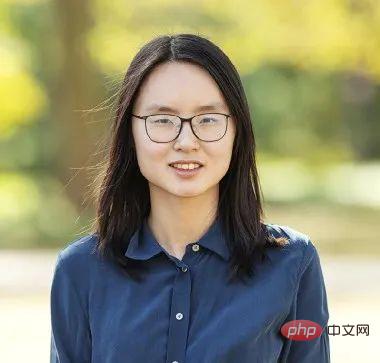 普林斯顿陈丹琦:如何让「大模型」变小Apr 08, 2023 pm 04:01 PM
普林斯顿陈丹琦:如何让「大模型」变小Apr 08, 2023 pm 04:01 PM“Making large models smaller”这是很多语言模型研究人员的学术追求,针对大模型昂贵的环境和训练成本,陈丹琦在智源大会青源学术年会上做了题为“Making large models smaller”的特邀报告。报告中重点提及了基于记忆增强的TRIME算法和基于粗细粒度联合剪枝和逐层蒸馏的CofiPruning算法。前者能够在不改变模型结构的基础上兼顾语言模型困惑度和检索速度方面的优势;而后者可以在保证下游任务准确度的同时实现更快的处理速度,具有更小的模型结构。陈丹琦 普
 解锁CNN和Transformer正确结合方法,字节跳动提出有效的下一代视觉TransformerApr 09, 2023 pm 02:01 PM
解锁CNN和Transformer正确结合方法,字节跳动提出有效的下一代视觉TransformerApr 09, 2023 pm 02:01 PM由于复杂的注意力机制和模型设计,大多数现有的视觉 Transformer(ViT)在现实的工业部署场景中不能像卷积神经网络(CNN)那样高效地执行。这就带来了一个问题:视觉神经网络能否像 CNN 一样快速推断并像 ViT 一样强大?近期一些工作试图设计 CNN-Transformer 混合架构来解决这个问题,但这些工作的整体性能远不能令人满意。基于此,来自字节跳动的研究者提出了一种能在现实工业场景中有效部署的下一代视觉 Transformer——Next-ViT。从延迟 / 准确性权衡的角度看,
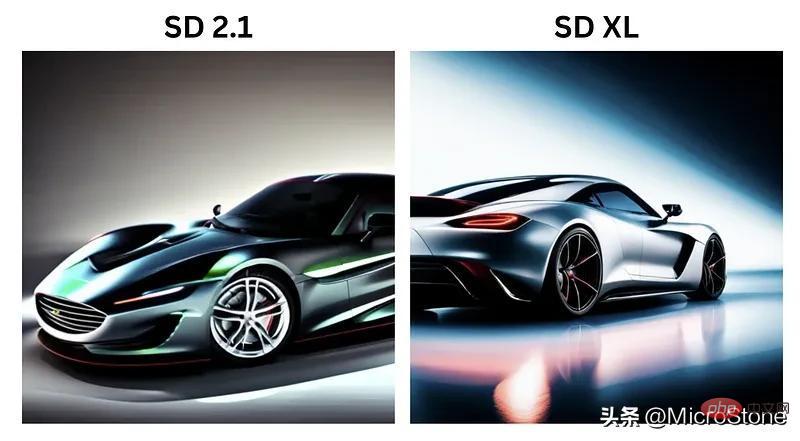 Stable Diffusion XL 现已推出—有什么新功能,你知道吗?Apr 07, 2023 pm 11:21 PM
Stable Diffusion XL 现已推出—有什么新功能,你知道吗?Apr 07, 2023 pm 11:21 PM3月27号,Stability AI的创始人兼首席执行官Emad Mostaque在一条推文中宣布,Stable Diffusion XL 现已可用于公开测试。以下是一些事项:“XL”不是这个新的AI模型的官方名称。一旦发布稳定性AI公司的官方公告,名称将会更改。与先前版本相比,图像质量有所提高与先前版本相比,图像生成速度大大加快。示例图像让我们看看新旧AI模型在结果上的差异。Prompt: Luxury sports car with aerodynamic curves, shot in a
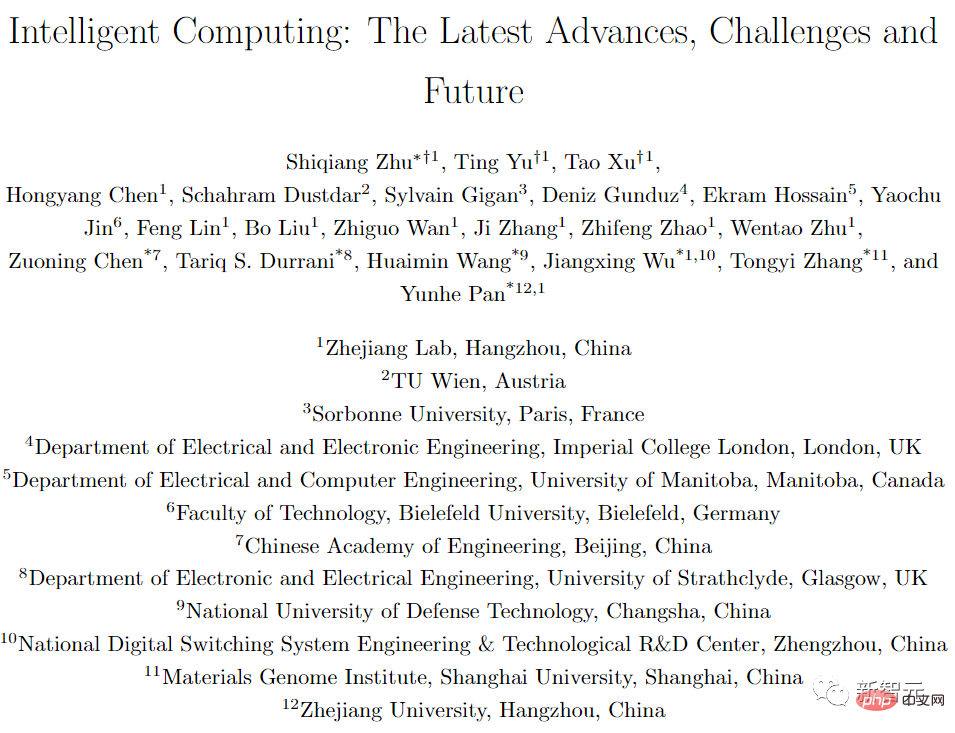 五年后AI所需算力超100万倍!十二家机构联合发表88页长文:「智能计算」是解药Apr 09, 2023 pm 07:01 PM
五年后AI所需算力超100万倍!十二家机构联合发表88页长文:「智能计算」是解药Apr 09, 2023 pm 07:01 PM人工智能就是一个「拼财力」的行业,如果没有高性能计算设备,别说开发基础模型,就连微调模型都做不到。但如果只靠拼硬件,单靠当前计算性能的发展速度,迟早有一天无法满足日益膨胀的需求,所以还需要配套的软件来协调统筹计算能力,这时候就需要用到「智能计算」技术。最近,来自之江实验室、中国工程院、国防科技大学、浙江大学等多达十二个国内外研究机构共同发表了一篇论文,首次对智能计算领域进行了全面的调研,涵盖了理论基础、智能与计算的技术融合、重要应用、挑战和未来前景。论文链接:https://spj.scien
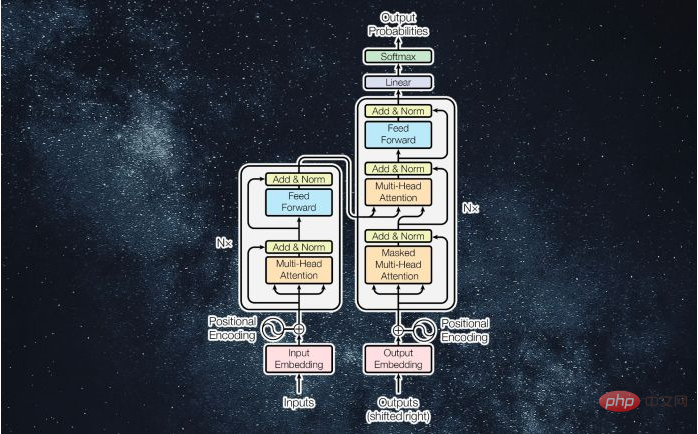 什么是Transformer机器学习模型?Apr 08, 2023 pm 06:31 PM
什么是Transformer机器学习模型?Apr 08, 2023 pm 06:31 PM译者 | 李睿审校 | 孙淑娟近年来, Transformer 机器学习模型已经成为深度学习和深度神经网络技术进步的主要亮点之一。它主要用于自然语言处理中的高级应用。谷歌正在使用它来增强其搜索引擎结果。OpenAI 使用 Transformer 创建了著名的 GPT-2和 GPT-3模型。自从2017年首次亮相以来,Transformer 架构不断发展并扩展到多种不同的变体,从语言任务扩展到其他领域。它们已被用于时间序列预测。它们是 DeepMind 的蛋白质结构预测模型 AlphaFold
 AI模型告诉你,为啥巴西最可能在今年夺冠!曾精准预测前两届冠军Apr 09, 2023 pm 01:51 PM
AI模型告诉你,为啥巴西最可能在今年夺冠!曾精准预测前两届冠军Apr 09, 2023 pm 01:51 PM说起2010年南非世界杯的最大网红,一定非「章鱼保罗」莫属!这只位于德国海洋生物中心的神奇章鱼,不仅成功预测了德国队全部七场比赛的结果,还顺利地选出了最终的总冠军西班牙队。不幸的是,保罗已经永远地离开了我们,但它的「遗产」却在人们预测足球比赛结果的尝试中持续存在。在艾伦图灵研究所(The Alan Turing Institute),随着2022年卡塔尔世界杯的持续进行,三位研究员Nick Barlow、Jack Roberts和Ryan Chan决定用一种AI算法预测今年的冠军归属。预测模型图


Hot AI Tools

Undresser.AI Undress
AI-powered app for creating realistic nude photos

AI Clothes Remover
Online AI tool for removing clothes from photos.

Undress AI Tool
Undress images for free

Clothoff.io
AI clothes remover

AI Hentai Generator
Generate AI Hentai for free.

Hot Article

Hot Tools

mPDF
mPDF is a PHP library that can generate PDF files from UTF-8 encoded HTML. The original author, Ian Back, wrote mPDF to output PDF files "on the fly" from his website and handle different languages. It is slower than original scripts like HTML2FPDF and produces larger files when using Unicode fonts, but supports CSS styles etc. and has a lot of enhancements. Supports almost all languages, including RTL (Arabic and Hebrew) and CJK (Chinese, Japanese and Korean). Supports nested block-level elements (such as P, DIV),

Notepad++7.3.1
Easy-to-use and free code editor

MinGW - Minimalist GNU for Windows
This project is in the process of being migrated to osdn.net/projects/mingw, you can continue to follow us there. MinGW: A native Windows port of the GNU Compiler Collection (GCC), freely distributable import libraries and header files for building native Windows applications; includes extensions to the MSVC runtime to support C99 functionality. All MinGW software can run on 64-bit Windows platforms.

Atom editor mac version download
The most popular open source editor

SublimeText3 Linux new version
SublimeText3 Linux latest version






